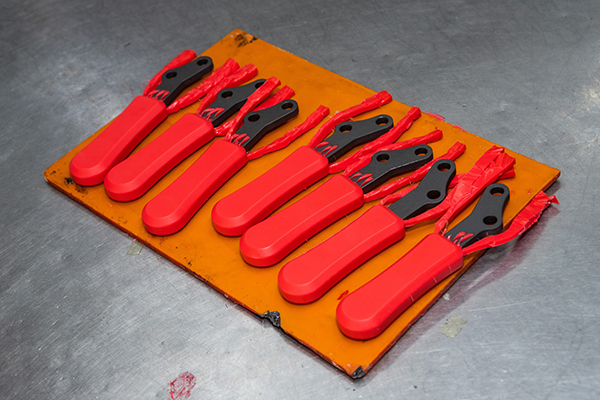A huge rise in demand for good technology that will sufficiently cater to the needs and requirements of both clients and manufacturers has led to the significant increase of rapid prototyping, especially vacuum casting. Vacuum casting is one of the production techniques that has hugely benefited from this.
Vacuum casting is used in prototyping and manufacturing; before we move any further, let’s first have a brief look at how the overall process works.
The entire vacuum casting technique is a combination of two processes: vacuum casting and molding. The overall process uses silicone resins, especially during mold preparation making it possible to combine the two processes.
The addition of polyurethane will mimic the qualities of key materials used in mass production, making the whole process a big success.

vacuum casting products*
Key features and qualities of vacuum casting
Versatility
One of the critical things that make vacuum casting stand out is its versatility making it ideal for prototype production. The casting technique is used in a wide range of casting applications; vacuum casting is perfect when it comes to the production of functional and intuitive parts for testing and experimentation.
Testing is quite crucial as it will show how the prototype mimics the final product and its behaviour before mass production is rolled out. This particular quality makes it perfect for mass production.
Vacuum casting is also another vital technique used to create housings and covers in the same way master models are produced. The model is usually made by casting silicone around the master; exposing it to vacuum, it removes all the air bubbles.
When silicone cools, it cured and model extracted. The created mold will now be ready for use to create thousands of parts from the master.
Economical
Vacuum casting is an affordable technique during modelling or testing; the casting technique strictly adheres to the dimensions and specifications of the parts and products to be created at lower costs due to minimal wastage.
When it comes to the tweaking of designs and accommodating changes, vacuum casting is quite flexible as it allows all this to be factored in, making it much more affordable.
Durability
Vacuum casting is one of the few production techniques that inhibits the creation of bubbles; due to this fact alone, it creates a resilient product that will serve you for years to come making it much more durable compared to parts and product created using other techniques.
The elimination of these bubbles will not affect the stability or integrity of any part or product. For this reason alone, vacuum casting is quite popular in the rapid prototyping field. For clients in the market for prototype production or low-volume manufacturing, vacuum casting present an excellent solution that is worth considering.
